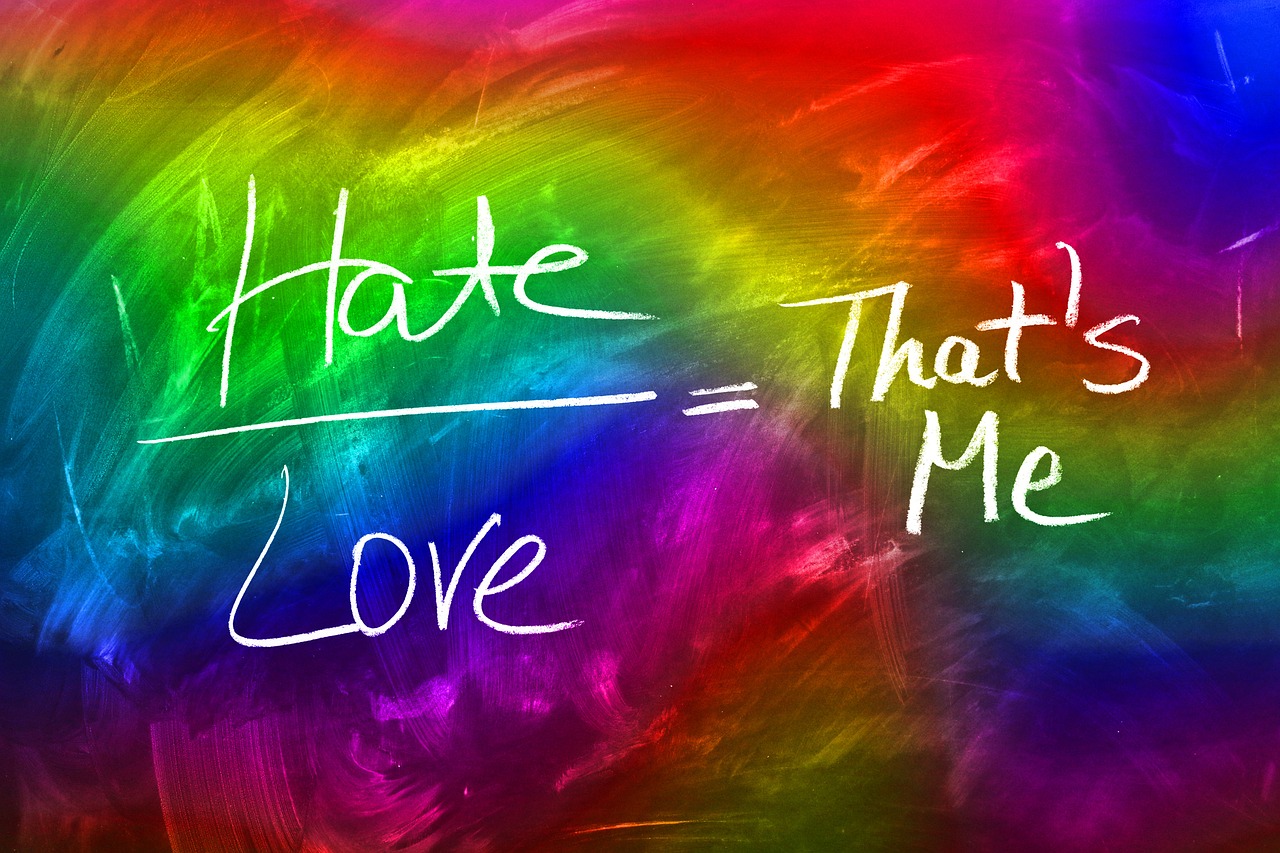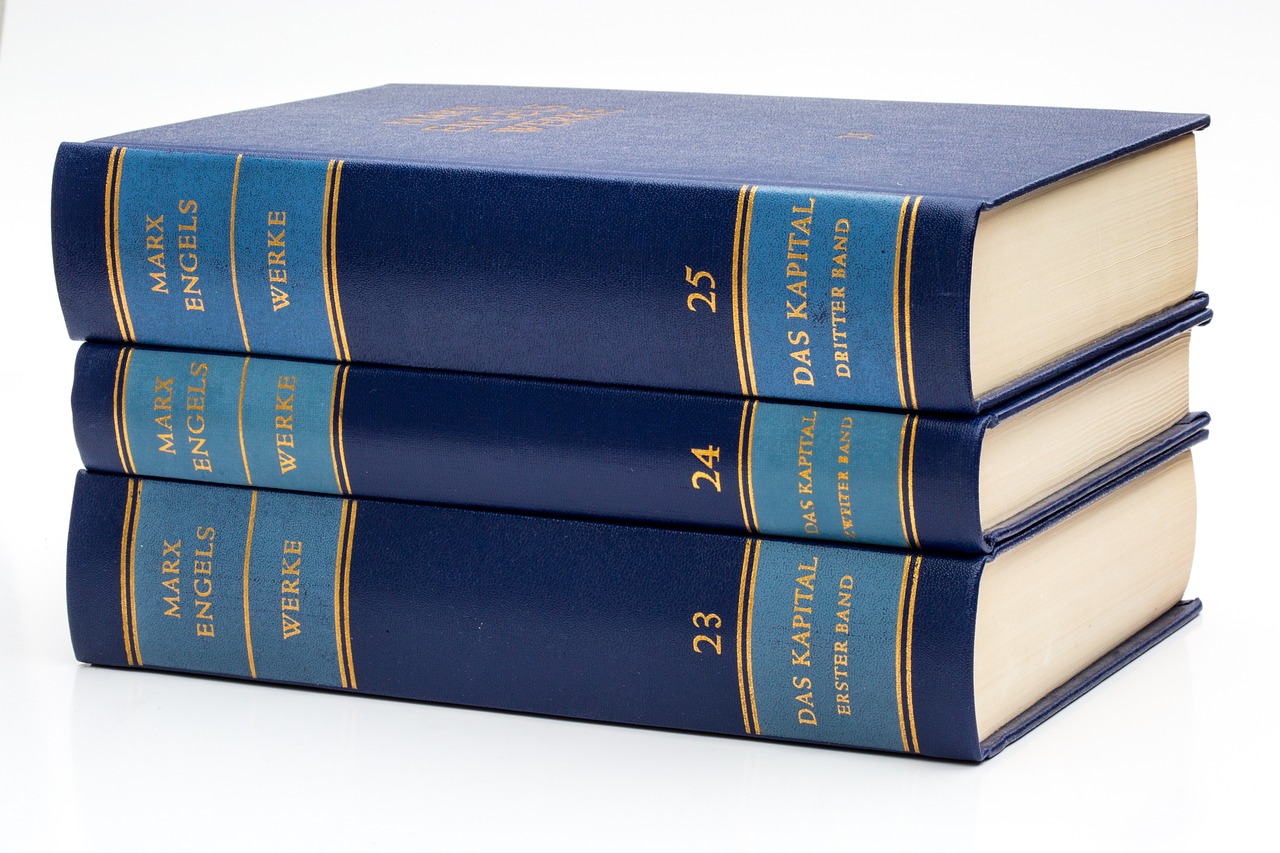Can We Bridge The Gap Between Idealism and Realism?
In a world that constantly oscillates between dreams and practicality, the philosophical battle between idealism and realism remains ever relevant. These two perspectives often seem like two sides of the same coin, each offering insights and challenges that shape our understanding of life, politics, ethics, and even our personal aspirations. But can we truly find a way to reconcile these seemingly opposing views? To explore this question, we must first delve into the depths of each philosophy, understanding their core principles and implications.
Idealism, at its heart, is about the power of ideas. It posits that our thoughts and beliefs can shape reality, suggesting that the world is not merely a collection of physical entities but a tapestry woven from our aspirations and ideals. This philosophy has inspired countless movements throughout history, encouraging individuals to strive for a better world based on lofty principles. However, idealism can sometimes lead to disillusionment, especially when the gap between our dreams and the harsh realities of life becomes too wide.
On the other hand, realism grounds us in the tangible. It emphasizes the importance of observable facts and practical solutions, often advocating for a pragmatic approach to life's challenges. Realists argue that while ideals are important, they must be tempered with a clear understanding of the world as it is. This perspective has proven invaluable in various fields, from politics to business, where the stakes are high and the consequences of naivety can be dire.
But what happens when these two philosophies clash? The tension between idealism and realism can lead to heated debates and ethical dilemmas. For instance, in politics, an idealist might advocate for policies that promote equality and justice, while a realist may counter that such ideals are impractical given the current socio-economic landscape. This tug-of-war can create a stalemate, leaving us wondering if there is a way forward.
To bridge the gap between idealism and realism, we need to embrace a more integrated approach. This means recognizing the value of both perspectives and finding common ground. Perhaps we can learn to dream big while also remaining grounded in reality. By fostering a dialogue between idealists and realists, we can create a more holistic understanding of the challenges we face and develop solutions that are both aspirational and achievable.
Ultimately, the question of whether we can bridge the gap between idealism and realism is not merely academic; it has profound implications for how we live our lives and engage with the world around us. As we navigate this complex landscape, let us keep an open mind and a willingness to learn from each other, for therein lies the potential for true progress.
- What is idealism? Idealism is a philosophical approach that emphasizes the role of ideas and ideals in shaping reality, suggesting that our thoughts can influence the world around us.
- What is realism? Realism focuses on the practical and tangible aspects of life, prioritizing observable facts and pragmatic solutions over ideals.
- Can idealism and realism coexist? Yes, by recognizing the strengths of both perspectives and fostering dialogue, we can find common ground and develop solutions that are both aspirational and practical.
- Why is it important to bridge the gap between these philosophies? Bridging the gap allows us to approach challenges in a more holistic way, integrating dreams with reality to create meaningful change.

Understanding Idealism
Idealism is a philosophical approach that places a significant emphasis on the role of ideas, beliefs, and ideals in shaping our understanding of reality. It suggests that the world is fundamentally influenced by the mental constructs we create, rather than being solely determined by the physical and observable elements around us. Think of it as a lens through which we view our experiences; it colors our perceptions and informs our actions. Idealists believe that by nurturing and striving for higher ideals, we can transform not only our personal lives but also the broader society.
The roots of idealism can be traced back to ancient philosophical traditions, with notable contributions from thinkers like Plato, who posited that the material world is just a shadow of a higher reality of forms and ideas. This perspective encourages individuals to pursue knowledge and truth, suggesting that the ultimate goal of life is to align with these transcendent ideals. In a way, idealism serves as a guiding star, encouraging people to aspire towards what is noble, just, and beautiful, even if these aspirations seem out of reach.
In contemporary contexts, idealism manifests in various fields, from politics and education to art and social movements. For instance, in education, idealism promotes the idea that teaching should not only impart knowledge but also inspire students to develop their moral and ethical compasses. This approach fosters a learning environment where the pursuit of truth and understanding is paramount. Similarly, in social movements, idealism has played a crucial role in advocating for justice and equality, pushing societies to envision a better future and strive toward it, despite the obstacles that may exist.
However, it's essential to recognize that idealism is not without its challenges. Critics argue that a purely idealistic approach can lead to disillusionment when reality fails to align with lofty ideals. This gap between aspiration and actuality can create frustration and cynicism. Therefore, while idealism serves as a powerful motivator for change, it must be balanced with an understanding of practical realities. In this sense, the relationship between idealism and realism becomes a dynamic interplay, where each philosophy can inform and enrich the other.
To illustrate the impact of idealism, consider the following table that outlines some key influences across different domains:
| Domain | Influence of Idealism |
|---|---|
| Education | Encourages holistic development and critical thinking. |
| Politics | Inspires movements for social justice and equality. |
| Art | Promotes creativity and the pursuit of beauty. |
| Ethics | Guides moral decision-making towards higher principles. |
In conclusion, understanding idealism requires recognizing its dual role as both a source of inspiration and a potential source of conflict with reality. By embracing the ideals that resonate with us, we can strive for a better world while remaining grounded in the practicalities of everyday life. This balance is crucial as we navigate our personal journeys and collective societal challenges.

Understanding Realism
Realism is a philosophical approach that prioritizes the tangible and practical aspects of human existence. Unlike idealism, which often focuses on the realm of ideas and ideals, realism grounds itself in observable facts and the realities of the world around us. It emphasizes the significance of what is concrete and measurable, often advocating for a pragmatic approach in various fields such as politics, ethics, and even art. In essence, realism invites us to take a closer look at the world as it is, rather than how we wish it to be.
At its core, realism challenges us to confront the complexities and imperfections of life. It suggests that while dreams and aspirations are valuable, they must be tempered with an understanding of the limitations and constraints we face. For instance, when we look at political systems, realism encourages us to assess the actual power dynamics at play, rather than relying solely on ideological aspirations for a better society. This approach can lead to more effective governance, as it considers the real-world implications of policies and decisions.
Realism is not just confined to politics; it permeates various aspects of life. In the realm of ethics, for example, a realistic view might involve acknowledging the difficult choices that must be made in morally ambiguous situations. Here, the emphasis shifts from idealistic principles to the practical consequences of actions. This focus on the real and the possible can often lead to more nuanced and effective solutions to ethical dilemmas.
Moreover, realism plays a significant role in the arts. Realist artists and writers strive to depict life as it truly is, often highlighting the struggles and triumphs of everyday people. This movement emerged as a reaction against romanticism, which often idealized life and human experiences. By embracing realism, artists can create works that resonate deeply with audiences, reflecting the genuine human experience in all its complexity.
In summary, realism serves as a crucial counterbalance to idealism. By focusing on the practical and the observable, it encourages us to engage with the world in a way that is grounded and realistic. This doesn't mean abandoning our ideals; rather, it suggests that our aspirations should be informed by a clear understanding of the realities we face. In this way, realism can provide a solid foundation for making informed decisions and crafting effective strategies in various domains of life.

The Historical Context of Idealism
To truly grasp the essence of idealism, we must delve into its rich historical context, which is woven through centuries of philosophical thought. Idealism, at its core, posits that reality is fundamentally shaped by our ideas, beliefs, and perceptions. This perspective has roots that can be traced back to ancient civilizations, where the power of thought and imagination was revered. The philosophical journey of idealism is like a river, winding through the landscapes of human consciousness, shaped by the tributaries of cultural and intellectual movements.
In ancient Greece, we find the seeds of idealism in the works of Plato. His theory of Forms suggests that non-material abstract forms, rather than the physical world, represent the most accurate reality. Plato's allegory of the cave illustrates how most people perceive only shadows of true reality, emphasizing the importance of enlightenment and the pursuit of knowledge. This foundation laid the groundwork for later idealists who would expand upon these ideas, exploring the relationship between the mind and the world.
The evolution of idealism took a significant turn during the German Idealism movement in the late 18th and early 19th centuries. Philosophers such as Immanuel Kant and Georg Wilhelm Friedrich Hegel played pivotal roles in this transformation. Kant introduced the concept that our understanding of the world is shaped by the structures of our mind, arguing that while we can never know things as they are in themselves, our experiences are filtered through our perceptions. Hegel further developed this idea, proposing that reality is a dynamic process of development, where the ideal and the real are intertwined in a dialectical relationship.
Throughout history, idealism has influenced various domains, including art, literature, and politics. It has inspired movements that champion the power of human thought and creativity, leading to cultural revolutions and social reforms. For example, the Romantic Movement in the late 18th century celebrated the individual’s emotional experience and the beauty of nature, reflecting idealistic principles that prioritize personal ideals over empirical reality. This era was a reaction against the rationalism of the Enlightenment, emphasizing feelings and intuition as valid pathways to understanding the world.
Moreover, idealism's impact is evident in modern educational theories, where the importance of nurturing ideals and critical thinking is emphasized. Educators influenced by idealistic philosophy advocate for a curriculum that fosters creativity, moral values, and a sense of purpose, arguing that education should not merely be about the acquisition of knowledge but about the formation of character and the pursuit of a greater good.
In summary, the historical context of idealism reveals a rich tapestry of thought that has evolved over centuries. From Plato's philosophical musings in ancient Greece to the dynamic developments of German Idealism, this philosophical tradition has significantly shaped human understanding and societal progress. As we continue to explore the implications of idealism in various fields, it becomes clear that its influence is not just a relic of the past but a vibrant force that continues to inspire and challenge our perceptions of reality.
- What is idealism? Idealism is a philosophical perspective that emphasizes the role of ideas and ideals in shaping reality.
- Who are the key philosophers associated with idealism? Significant figures include Plato, Immanuel Kant, and Georg Wilhelm Friedrich Hegel.
- How has idealism influenced society? Idealism has impacted social movements, education, and cultural developments throughout history.

Key Philosophers of Idealism
When delving into the rich tapestry of idealism, it's impossible to overlook the profound contributions of several key philosophers who have shaped this philosophical landscape. Among these thinkers, Plato stands out as a foundational figure. His theory of Forms posits that the material world is merely a shadow of a higher reality, where perfect ideals exist. For Plato, understanding these ideals is essential for achieving true knowledge and wisdom. This perspective not only influenced philosophy but also laid the groundwork for various fields, including art and politics.
Another towering figure in the realm of idealism is Georg Wilhelm Friedrich Hegel. Hegel expanded on Plato's ideas, emphasizing the dynamic nature of reality and the process of dialectical reasoning. He believed that the evolution of ideas occurs through a triadic process of thesis, antithesis, and synthesis. This method illustrates how conflicting ideas can lead to the emergence of new, more refined concepts, ultimately contributing to our understanding of reality. Hegel's thoughts have had a lasting impact on various disciplines, including history, politics, and even psychology.
Moving forward in time, we encounter Immanuel Kant, who introduced a unique twist to idealism. Kant argued that while our understanding of the world is shaped by our perceptions, there exists a realm of things-in-themselves that we cannot fully grasp. His critical philosophy highlights the limitations of human cognition while still affirming the importance of ideas and moral imperatives. Kant's influence extends deeply into ethics, as he posited that moral actions should be guided by universal principles, a notion that resonates in contemporary discussions on morality.
In the 19th and 20th centuries, idealism continued to evolve through thinkers like Josiah Royce and Bertrand Russell. Royce emphasized the role of community and loyalty in shaping individual ideals, suggesting that our identities are intertwined with those of others. On the other hand, Russell, while often associated with analytic philosophy, explored the implications of idealism in the context of logic and mathematics, challenging the boundaries between idealist and realist perspectives.
To summarize the contributions of these philosophers, we can highlight their key ideas in the following table:
| Philosopher | Key Contribution |
|---|---|
| Plato | Theory of Forms - The material world is a shadow of the higher realm of ideals. |
| Hegel | Dialectical Method - Ideas evolve through thesis, antithesis, and synthesis. |
| Kant | Critique of Pure Reason - Understanding is limited by perception, but moral imperatives are universal. |
| Royce | Community and Loyalty - Individual ideals are shaped by communal relationships. |
| Russell | Logic and Mathematics - Explored the boundaries between idealism and realism. |
These philosophers not only laid the groundwork for idealism but also sparked debates that continue to resonate today. Their legacy is evident in how we approach complex questions about reality, knowledge, and ethics. By understanding their contributions, we can better appreciate the intricate dance between ideals and the tangible world we navigate daily.
- What is idealism? Idealism is a philosophical approach that emphasizes the role of ideas, ideals, and consciousness in shaping reality.
- Who are the main philosophers associated with idealism? Key figures include Plato, Hegel, Kant, Royce, and Russell.
- How does idealism differ from realism? While idealism focuses on ideals and concepts, realism prioritizes observable facts and practical aspects of life.
- Can idealism and realism coexist? Yes, many contemporary thinkers advocate for a synthesis of both perspectives to address complex issues.

Impact of Idealism on Society
Idealism has played a crucial role in shaping our society, influencing everything from social movements to educational philosophies. At its core, idealism asserts that the world is fundamentally shaped by our ideas and beliefs. This perspective encourages individuals and groups to envision a better future, often leading to significant societal changes. For instance, the civil rights movement in the United States was heavily influenced by idealistic principles, advocating for equality and justice based on the belief that all individuals deserve the same rights, regardless of race.
Moreover, idealism has been a driving force in the realm of education. The idealist approach emphasizes the development of the mind and the pursuit of knowledge as a means to achieve personal and societal progress. This philosophy has led to the establishment of educational systems that prioritize critical thinking and moral development over rote memorization. Schools inspired by idealistic values aim to nurture not just informed citizens, but also compassionate individuals who can contribute positively to society.
In the arts and culture, idealism has inspired countless movements. From the Romantic poets who celebrated human emotion and nature to contemporary artists who challenge societal norms, idealism encourages a creative exploration of human experience. This artistic expression often reflects deep-seated ideals and aspirations, resonating with audiences on a profound level. The impact of these ideals can be seen in how they inspire collective movements, provoke thought, and foster a sense of community among individuals who share similar visions for the future.
However, the influence of idealism is not without its challenges. While lofty ideals can inspire change, they can also lead to disillusionment when reality fails to meet expectations. For example, many social movements that begin with great enthusiasm can falter when faced with the complexities of political and economic systems. This disconnect between ideals and reality can result in frustration and apathy among supporters, highlighting the need for a balanced approach that acknowledges both idealistic aspirations and realistic constraints.
To better understand the societal impacts of idealism, consider the following table that outlines key areas where idealistic thought has made a significant difference:
| Area | Impact of Idealism |
|---|---|
| Social Movements | Advocacy for equality, justice, and human rights. |
| Education | Focus on holistic development, critical thinking, and moral values. |
| Arts and Culture | Inspiration for creativity, expression of human experience and emotion. |
| Politics | Promotion of visionary policies and reforms aimed at societal betterment. |
In conclusion, idealism has profoundly influenced society by inspiring movements, shaping educational philosophies, and fostering artistic expression. While it can lead to great advancements, it is essential to recognize the potential pitfalls that arise when ideals clash with reality. By understanding the impact of idealism, we can appreciate its role in driving social change while also acknowledging the importance of grounding our aspirations in practical realities.
- What is the main difference between idealism and realism? Idealism focuses on ideas and ideals as the primary drivers of reality, while realism emphasizes observable facts and practical considerations.
- How has idealism influenced modern education? Idealism has led to educational systems that prioritize critical thinking, creativity, and moral development over rote learning.
- Can idealism and realism coexist? Yes, many believe that a balanced approach that incorporates both idealistic aspirations and realistic constraints can lead to more effective solutions to societal challenges.
- What are some examples of idealism in social movements? The civil rights movement, women's suffrage, and environmental activism are all examples where idealistic values have spurred significant societal changes.

The Historical Context of Realism
Realism, as a philosophical movement, emerged in the late 19th century as a reaction against the lofty ideals of romanticism and the abstract theories of idealism. It sought to ground human experience in the material world, emphasizing observation and evidence over speculation and abstract ideals. This shift marked a significant turning point in various fields, including literature, art, and politics, where the focus shifted from what could be imagined to what could be perceived and documented.
The roots of realism can be traced back to earlier philosophical discussions, but its formal emergence was catalyzed by significant historical events such as the Industrial Revolution and the rise of scientific thought. These developments prompted thinkers and artists to reflect on the human condition as it truly was, rather than how it could be envisioned. Realism, therefore, became a lens through which to examine society, politics, and human behavior in a more pragmatic light.
One of the key features of realism is its commitment to depicting life accurately and honestly. This approach often involves portraying the struggles, challenges, and mundane realities of everyday life. In literature, for instance, authors like Gustave Flaubert and Leo Tolstoy focused on the intricacies of human relationships and societal structures, highlighting the often harsh and unromantic aspects of existence. Their works serve as a testament to the power of realism in capturing the authentic human experience.
In the realm of art, realism took on a visual form through painters like Gustave Courbet and Édouard Manet, who rejected the idealized representations of beauty and instead portrayed ordinary people and scenes. This artistic movement was revolutionary, as it broke away from traditional norms and sought to present life as it truly was, without embellishment. The impact of realism in art can still be felt today, as it laid the groundwork for modern artistic expressions that prioritize authenticity and relatability.
Moreover, the historical context of realism is incomplete without acknowledging its influence on political thought. Realist political theory, which emerged in the wake of the idealistic notions of international relations, emphasizes the importance of power dynamics and national interests. Thinkers like Hans Morgenthau and Niccolò Machiavelli argued that political actions should be based on pragmatic considerations rather than moral ideals. This perspective has shaped contemporary political discourse, especially in understanding the complexities of global relations and conflict.
In summary, the historical context of realism is rich and multifaceted, reflecting a significant shift in how humans perceive and engage with the world around them. By prioritizing the tangible and observable, realism has not only influenced literature and art but has also left an indelible mark on political theory and practice. As we continue to navigate the complexities of modern life, the principles of realism offer valuable insights into the challenges we face.
- What is the main difference between idealism and realism?
Idealism focuses on ideas and ideals, while realism emphasizes observable facts and practical considerations. - Who are some key figures in the realism movement?
Notable figures include Gustave Flaubert in literature and Gustave Courbet in art. - How did realism influence politics?
Realism in politics emphasizes power dynamics and national interests over moral ideals, shaping modern political discourse.

The Tension Between Idealism and Realism
The philosophical clash between idealism and realism is not just a matter of abstract thought; it permeates our daily lives and shapes the world around us. At its core, idealism champions the belief that our thoughts, dreams, and aspirations can manifest into reality, urging us to chase the seemingly unattainable. On the other hand, realism grounds us, reminding us of the harsh truths and limitations we face in the real world. This tension creates a fascinating dynamic where both perspectives can either complement or conflict with one another.
In various domains, such as politics, ethics, and social movements, this dichotomy often plays out in dramatic fashion. For instance, consider a politician who is driven by idealistic visions of a better society. They may propose ambitious policies aimed at social justice and equality, envisioning a world where everyone thrives. However, when faced with the gritty realities of budget constraints, public opinion, and political opposition, these idealistic proposals can quickly become unfeasible. This is where the realist perspective steps in, often advocating for more pragmatic, albeit less ambitious, solutions that can be implemented within the existing framework.
Moreover, the tension between these two philosophies can lead to a cycle of frustration. Idealists may feel disillusioned when their grand visions are met with resistance or compromise, while realists may grow weary of the idealists' persistent optimism, seeing it as naive or impractical. This friction can create a rift in collaborative efforts, as each side struggles to understand the other's viewpoint. It raises the question: Can we truly find a middle ground where both idealism and realism coexist?
To illustrate this tension further, let’s look at a few key areas where it manifests:
- Politics: The debate over healthcare reform often sees idealists advocating for universal coverage, while realists highlight budgetary limitations and the complexities of implementation.
- Ethics: In moral decision-making, idealists may argue for absolute ethical standards, while realists contend that context and consequences must also be considered.
- Education: Educators often grapple with the idealistic goal of fostering creativity and critical thinking in students against the realistic need to prepare them for standardized tests and job markets.
As we navigate these tensions, it becomes crucial to recognize that both idealism and realism have their merits. Idealism inspires innovation, pushing boundaries and encouraging us to dream big. Realism, in contrast, provides the necessary grounding to ensure those dreams can be realized in practical terms. The challenge lies in finding a way to integrate these perspectives, allowing for a more holistic approach to problem-solving.
In conclusion, the tension between idealism and realism is an ongoing dialogue that reflects our human experience. By embracing both perspectives, we can foster a more comprehensive understanding of the world and work towards solutions that are both visionary and practical. As we delve deeper into this philosophical exploration, we must ask ourselves: How can we bridge the gap between these two seemingly opposing forces to create a better future?
- What is the main difference between idealism and realism? Idealism focuses on the importance of ideas and ideals, while realism emphasizes practical and tangible aspects of life.
- Can idealism and realism coexist? Yes, by integrating both perspectives, we can create more effective solutions that inspire innovation while remaining grounded in reality.
- How do these philosophies impact decision-making? Idealism may drive ambitious goals, while realism ensures that those goals are achievable and practical within existing constraints.

Case Studies in Politics
When we think about the clash between idealism and realism in politics, a few prominent case studies come to mind that vividly illustrate this tension. One such example is the United Nations' efforts to address global poverty. Idealists advocate for a world where resources are shared equitably and every individual has access to basic needs. They envision a future where humanitarian efforts are prioritized over political agendas. However, the reality of international politics often complicates these noble aspirations. Countries may prioritize their national interests, leading to a lack of consensus and action. This dichotomy raises the question: can we truly achieve a balance between altruism and self-interest in global governance?
Another compelling case is the debate surrounding climate change. Idealists argue for immediate and drastic measures to combat environmental degradation, pushing for policies that align with sustainability and long-term ecological health. They envision a world that prioritizes the planet over profit, advocating for renewable energy sources and stringent regulations on pollution. Yet, the realist perspective often counters these ideals, emphasizing economic stability and the potential job losses that might arise from such drastic shifts. This creates a political landscape where compromises are necessary, but often unsatisfactory to those who hold idealistic views.
In the realm of international relations, the Cold War serves as a historical case study that starkly illustrates the tension between these two philosophies. The United States, driven by idealistic notions of democracy and freedom, sought to contain the spread of communism, which they viewed as a direct threat to these values. Conversely, the Soviet Union operated under a realist framework, focusing on maintaining power and influence at all costs. The resulting policies and military strategies from both sides often led to conflict and tension, demonstrating how idealism and realism can shape foreign policy decisions in profound ways.
To further explore this tension, consider the following table that summarizes key differences in political approaches:
| Aspect | Idealism | Realism |
|---|---|---|
| Focus | Values and ideals | Pragmatic and practical outcomes |
| Motivation | Altruism and moral obligations | Self-interest and power dynamics |
| Policy Approach | Proactive, often ideal-driven | Reactive, based on current realities |
| Example | Humanitarian interventions | Realpolitik strategies |
These case studies and the accompanying table illustrate the complex interplay between idealism and realism in politics. As we navigate these waters, it's essential to recognize that while both perspectives hold merit, the challenge lies in finding a way to harmonize them. This reconciliation is not merely an academic exercise; it has real-world implications that affect policy-making and governance on a global scale. How can we ensure that our political systems reflect both our highest ideals and the harsh realities we face? This remains a pressing question for leaders and citizens alike.
- What is the main difference between idealism and realism in politics? Idealism focuses on values and moral principles, while realism emphasizes practical outcomes and self-interest.
- Can idealism and realism coexist in political discourse? Yes, finding a balance between the two can lead to more effective and compassionate governance.
- What are some historical examples of idealism influencing policy? The establishment of the United Nations and various humanitarian interventions are notable examples.

Case Studies in Ethics
When we dive into the murky waters of ethics, the clash between idealism and realism becomes vividly apparent. Ethical dilemmas often force individuals and societies to navigate a tightrope between lofty ideals and the harsh realities of life. Take, for instance, the classic trolley problem—a thought experiment that poses a moral quandary: should one pull a lever to divert a runaway trolley onto a track where it will kill one person instead of five? This scenario exemplifies the struggle between utilitarian ideals, which prioritize the greatest good for the greatest number, and the realistic implications of taking an active role in causing harm.
In another compelling case, consider the ethical implications of environmental policies. Idealists advocate for aggressive measures to combat climate change, envisioning a world where renewable energy reigns supreme and pollution is a relic of the past. However, realists often point out the economic ramifications of such policies, arguing that immediate job losses and financial instability could undermine the very progress idealists seek. This tension raises critical questions: Should we sacrifice short-term stability for long-term benefits? Can we find a middle ground?
Furthermore, the realm of healthcare presents another fascinating illustration of this ethical tug-of-war. In an ideal world, everyone would have access to unlimited healthcare resources, ensuring that no one suffers due to lack of treatment. Yet, the reality is that resources are finite, and decisions must be made about who receives care and who does not. This leads to ethical debates surrounding healthcare rationing, where realists argue for a pragmatic approach based on available resources, while idealists push for universal access as a fundamental right. The question remains: how do we balance compassion with practicality?
To further explore these dilemmas, we can examine a table that summarizes key ethical cases where idealism and realism collide:
| Case Study | Idealist Perspective | Realist Perspective |
|---|---|---|
| Trolley Problem | Maximize overall happiness by saving more lives. | Active involvement in causing harm is morally problematic. |
| Environmental Policy | Urgent action is needed to save the planet. | Economic stability must be considered in policy-making. |
| Healthcare Access | Healthcare is a fundamental human right. | Resources are limited; prioritization is necessary. |
These examples illustrate that ethical decisions are rarely black and white. Instead, they exist in a vibrant spectrum where the ideals we hold dear often clash with the realities we face. As we navigate these complexities, it becomes clear that a dialogue between idealism and realism is essential. By understanding the strengths and weaknesses of both perspectives, we can work towards more nuanced ethical frameworks that honor our ideals while remaining grounded in the realities of human experience.
- What is the difference between idealism and realism in ethics?
- Can idealism and realism coexist in ethical decision-making?
- How do case studies help in understanding ethical dilemmas?
Idealism focuses on moral principles and values, advocating for what ought to be, while realism emphasizes practical considerations and the actual circumstances surrounding ethical decisions.
Yes, a balanced approach that incorporates both idealistic values and realistic constraints can lead to more comprehensive and effective ethical solutions.
Case studies provide concrete examples that illustrate the complexities of ethical decisions, allowing us to analyze the implications of different perspectives in real-world scenarios.

Potential Pathways to Reconciliation
Bridging the gap between idealism and realism is no small feat, but it’s a journey worth taking. To begin with, we need to acknowledge that both philosophies have their strengths and weaknesses. Idealism inspires us to dream big and strive for a better world, while realism grounds us in the practicalities of our current situation. So, how can we find common ground?
One potential pathway to reconciliation lies in fostering an integrative mindset. This means recognizing that idealistic visions can inform realistic actions. For instance, consider the realm of environmental policy. Idealists may advocate for radical changes to combat climate change, envisioning a world where sustainability is the norm. Realists, however, might focus on incremental changes that can be realistically implemented within existing political frameworks. By combining these approaches, we can create policies that are both visionary and achievable.
Another avenue for reconciliation is through collaborative dialogue. When idealists and realists engage in open conversations, they can share perspectives that enrich their understanding of complex issues. This dialogue can be facilitated through workshops, community forums, or online platforms where diverse voices can contribute. By listening to one another, both sides can identify common goals and work together towards solutions that respect both ideals and practical constraints.
Moreover, education plays a crucial role in this reconciliation process. By integrating both idealistic and realistic perspectives into educational curricula, we can cultivate a generation that appreciates the value of both approaches. For example, teaching students about the importance of social justice (an idealist perspective) alongside the realities of economic limitations (a realist perspective) can empower them to think critically and creatively about how to effect change in their communities.
Here are a few strategies that can help in this educational endeavor:
- Incorporate case studies that highlight successful collaborations between idealists and realists.
- Encourage project-based learning where students can tackle real-world problems with both idealistic and realistic solutions.
- Facilitate discussions that challenge students to consider multiple viewpoints and develop a balanced perspective.
Finally, embracing a dynamic approach to problem-solving can also help bridge the divide. This means being flexible and willing to adapt our strategies as circumstances change. For instance, in a political context, a policy that begins as a bold ideal may need to be adjusted to fit the realities of public opinion and legislative constraints. By being open to change, we can ensure that our ideals remain relevant and actionable.
In summary, reconciling idealism and realism requires a multifaceted approach that includes integrative thinking, collaborative dialogue, educational reform, and a dynamic mindset. By recognizing the value of both perspectives, we can work towards solutions that are not only visionary but also grounded in reality. The journey may be challenging, but the potential for meaningful change makes it worthwhile.
- What is the main difference between idealism and realism? Idealism emphasizes the importance of ideas and aspirations, while realism focuses on practical and tangible aspects of life.
- Can idealism and realism coexist? Yes, they can coexist and even complement each other when approached with an open mind and a willingness to collaborate.
- How can education help in reconciling these philosophies? Education can help by teaching students to appreciate both perspectives and encouraging critical thinking and creative problem-solving.
Frequently Asked Questions
- What is the main difference between idealism and realism?
Idealism focuses on the importance of ideas and values in shaping our understanding of reality, while realism emphasizes the significance of tangible, observable facts. In essence, idealism is about what could be, while realism is about what is.
- How do idealism and realism influence society?
Idealism can inspire social movements and educational reforms by promoting high ideals and aspirations. On the other hand, realism grounds these aspirations in practical realities, ensuring that goals are achievable and based on actual conditions. Both philosophies play crucial roles in shaping societal values and actions.
- Can idealism and realism coexist?
Absolutely! While they may seem opposing, idealism and realism can complement each other. By recognizing the ideals we aspire to while also understanding the practical limitations we face, we can develop a more balanced approach to problem-solving and decision-making.
- What are some examples of idealism in politics?
Idealism in politics often manifests in policies that aim for social justice, environmental protection, and human rights. Politicians who advocate for these causes typically emphasize the importance of ethical values and long-term visions, even if they face immediate practical challenges.
- How does realism impact ethical decision-making?
Realism introduces a pragmatic lens to ethical dilemmas, encouraging individuals to consider the consequences of their actions in the real world. This approach often leads to tough choices where ideals may need to be sacrificed for practical outcomes, highlighting the complexities of moral decision-making.
- What are some pathways to reconcile idealism and realism?
One pathway is to foster open dialogues that encourage collaboration between idealists and realists. By integrating both perspectives, we can create strategies that not only aspire to high ideals but also remain grounded in practical realities, leading to more effective solutions to societal challenges.



















